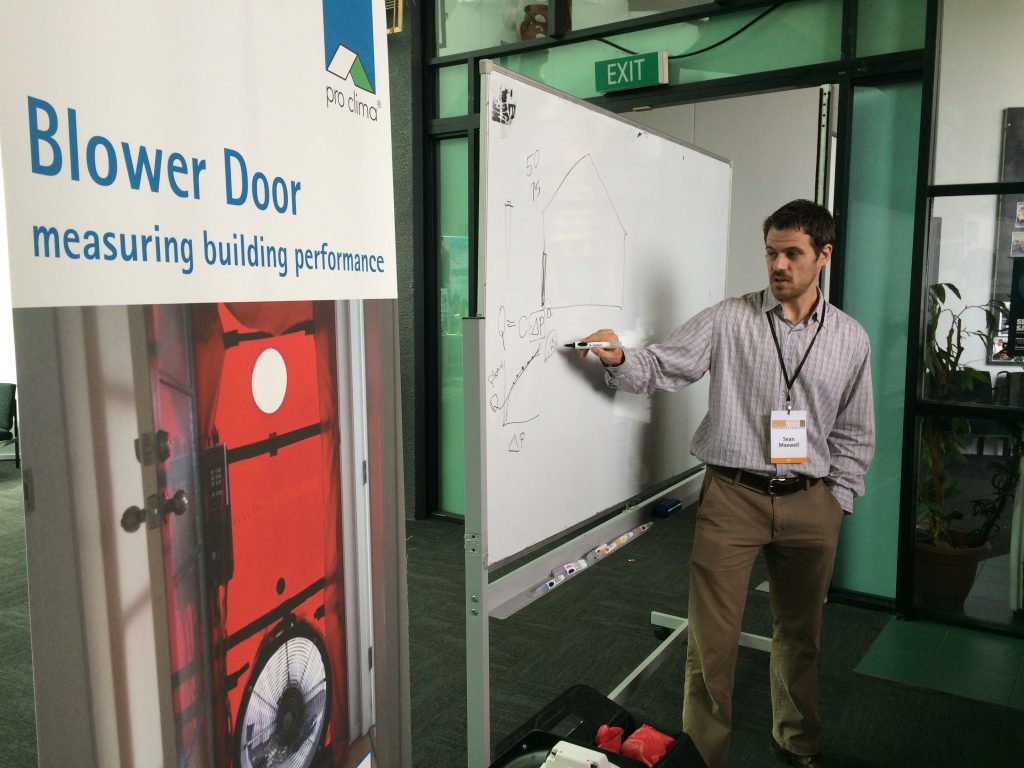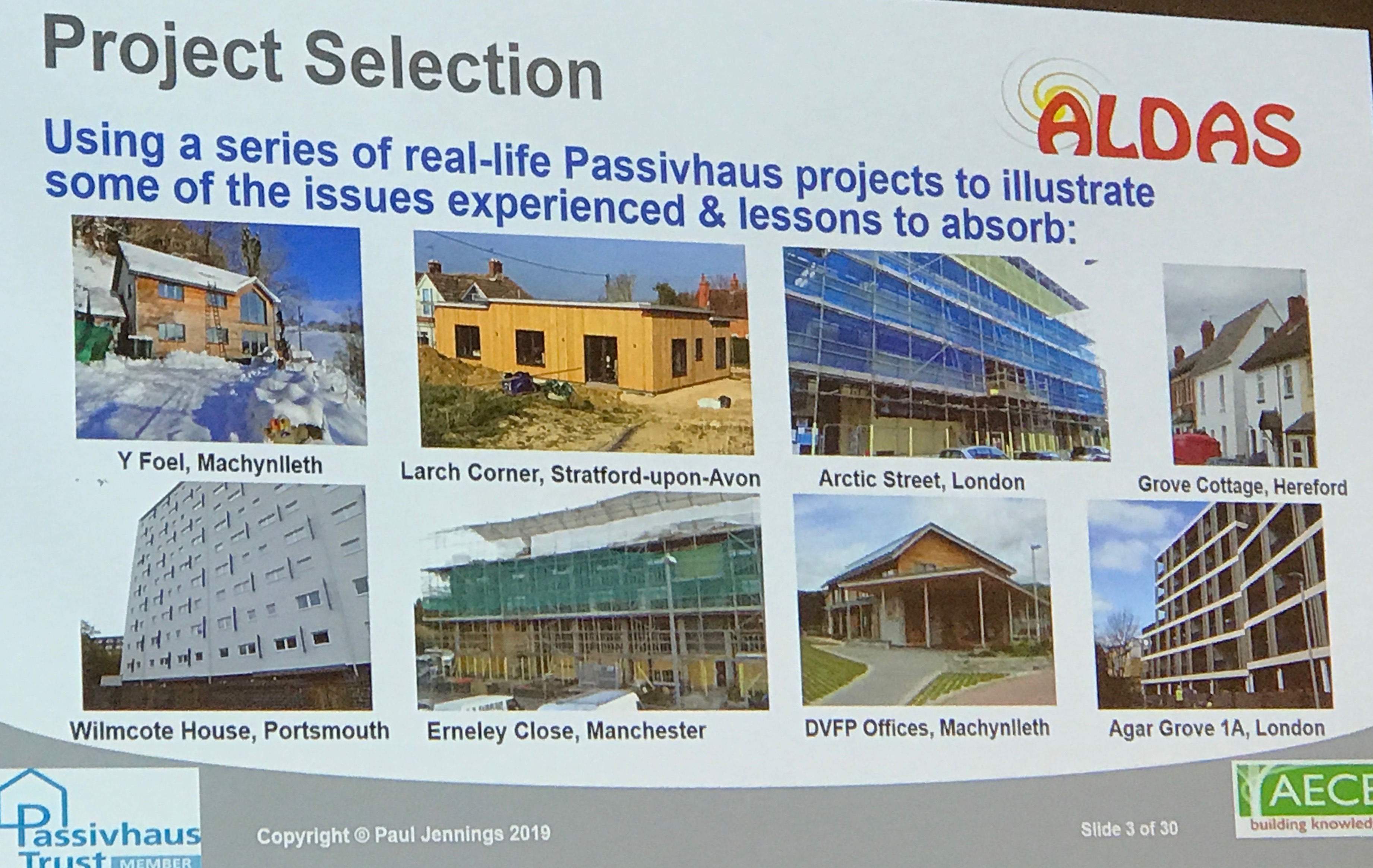Podcast: Play in new window | Download | Embed

Paul Jennings needed a project for his dissertation on fuel poverty in the UK when he came across some charity work funded by the then ‘Greater London Council’. This was back in the 1980s. Not many people had heard of Blower Doors or airtightness testing. But a team from the suppliers in Canada were willing to travel to the UK to train people on how Blower Doors could be used to help diagnose energy and health issues in buildings.
An Integrated Approach for Addressing Fuel Poverty
Through his fuel poverty charity work, Paul and his colleagues provided a broad approach to assisting people with cold, damp and mouldy houses. As well as measuring air leakage, they also looked at heating systems, insulation and draught proofing. Crucially, they were also provided training.
Appliances and Education
Paul and his team used videos (literally, video cassettes) for extending the reach of their training. They realised that they could provide energy efficient heating to people, but it would not be very efficient or even effective if tenants and property owners didn’t know how to use the appliances. This is a valuable lesson for designers and consultants. At the time, Paul and his team were dealing with condensing boilers. Today, we have a similar need for teaching home owners how to use heat pumps.
How is Airtightness Related to Fuel Poverty?
35 years ago, airtightness testing was a research tool. Blower Doors were far more basic and required manual operation and calculation to obtain useful results. Nowadays suppliers such as Retrotec and The Energy Conservatory produce automated, user-friendly equipment and standards for testing are well established in numerous countries.
Paul realised a link between upgraded windows and the accumulation of mould. A plastered, concrete block building has pretty airtight walls so windows tend to be the weakest link in the envelope. When old, draughty, steel frames were replaced with more modern windows, Paul started measuring airtightness around 2 – 3 air changes per hour. This can be good for energy efficiency, but needs to be accompanied by appropriate ventilation. When ventilation is absent, the risk of mould increases.
But even with basic equipment it was obvious that airtightness played an important role in building performance. The need for improvements to the housing stock was as obvious three decades ago in the UK as it is here in New Zealand today. There was black mould on surfaces and the houses were noticeably cold. Using a blower door helps to find the leaks and to quantify the size of the problem.
Airtightness Testing Regulations
The requirement for airtightness testing first came in to the UK building regulations in 2002. Initially airtightness testing was only mandatory for new, non-domestic buildings above 1,000 m². This was incrementally changed to include more and more building types, including sample testing of houses. Testing requirements in the UK today are even more detailed and are conintually being updated.
Building Permeability
Instead of air changes per hour (ACH), an early requirement for airtightness in the UK was a permeability rate of 10m³/(h.m²). That is, the air leakage rate per hour, per square metre of the building envelope. Instead considering how long it takes to completely replace the volume of air inside the building (air change rate), permeability defines the ‘leakiness’ of the building envelope. Sean Maxwell, provides a good explanation here of why permeability is a better measure than air change rate.
Passive House for Exeter Council Housing
Paul mentioned Exeter during this interview. Exeter City Council has been a leader recently in requiring Passive House standard for some of their own building stock. This is exciting because the Exeter experience has shown that Passive House is an effective means of providing energy efficient and healthy public buildings and social housing.
Learning from Thirty Years of Airtightness Testing
During his more than thirty years of experience testing the airtightness of buildings, Paul Jennings has accumulated an extensive list of case studies. He distilled some of the key learning for all types of projects and presented some of this advice during his presentation at the Passive House Conference in Heidelberg, May 2019.
Some of Paul’s key message include:
- Airtightness doesn’t happen by accident. It must be planned
- Airtightness is critical for achieving Passive House
- Airtightness requires good design, good products, good people and a good process
Paul has developed a ’12 step plan’ for good airtightness testing. Prominent features of this plan include getting everyone involved in the project together, early on and visiting the site to check on progress before the scheduled testing date. Paul recommends that an allowance be made in the project plan for re-checking. Preliminary airtightness testing often reveals defects or issues that need to be resolved before final testing can be completed.
Become a Airtightness Tester
Whether you want to check the quality of your own projects, or set up to be a professional airtightness tester, check out the Blower Door training now available through Pro Clima in New Zealand and Australia.


Leave a Reply